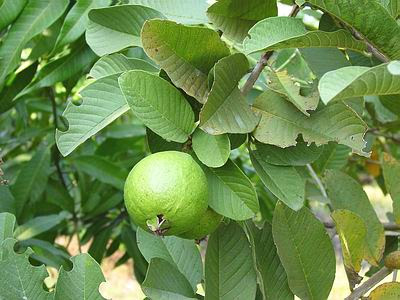The World is Green Interview – Sreenivas Ghatty
Over the past year or so I have been covering the green industry to understand it better. Over the course, it became apparent that the biggest stories are about the people behind these initiatives.
In the course of being in this industry and writing on the blog I have come across some interesting people who are trying to make it big in this industry in their own way. In order to tell their story, I have decided to conduct an interview with them. The idea is to understand the stories at a more personal and knowledgable level.
I have no specific publishing schedule, but would try to do about 3 interviews a month.
Our guest today is Sreenivas Ghatty. Sreenivas is the founder and CEO of Tree Oils India. With all the interest in Biofuels Sreenivas believes that there is a great future for using them as an alternate fuel of choice.
Thank you Sreenivas for agreeing to this interview. Can you please tell our readers about yourself?
Thank you for giving me this opportunity. I have a Masters in Agriculture and was a corporate banker in India and Dubai for 18 years until I entered the Biodiesel industry in 2003. I live in Melbourne with my wife and two daughters and keep travelling to India and other countries regularly.What is your company about?
Tree Oils India Limited was established in 2003 to produce Biodiesel from non-edible oils. Please visit our web site (www.treeoilsindia.com) to learn more about this company. Bear with me if some of the information is obsolete as the contents have not been updated during the last five years. As non-edible feedstocks were not available in sufficient quantities and at reasonable pricen at the time, we started with plantation activity. As there were no tested varities of these tree species and knowledge of agronomy was limited, we started an R&D farm to begin with. So, as of now, we are a technical-know-how company, trying to develop non-edible oil-bearing trees such as Pongamia, Jatropha etc.
Why BioFuels?
With peak oil approaching faster, alternative energy sources need to be developed. Biofuels are the cheapest and the most sustainable alternative and they can be produced and consumed locally by many people in small quantities. Alongside, there are also benefits to economy and environment.
What has been your personal experience in this area?
I have been involved in this activity for more than five years. The industry is nascent, the technology is evolving and there are issues in pricing, incetives, feedstocks and marketing. If one has right perspective, is flexible and has holding capacity, the long term prospects are good. My personal experience has been the transformation from a prospective Biodiesel producer to a Biodiesel plantation technical know-how consultant. I hope to realise my dream of producing Biodiesel in the near future.
What are the current projects in Australia, India and rest of the world?
Biodiesel manufacturing units are being established all over the world, including Australia and India. Some of them are being closed mainly due to high cost of feedstocks. Biodiesel plantations with species like Jatropha and Pongamia are being establsihed by the present and future Biodiesel Manufacturing and Feedstock Management companies on their own and through contract farming. All these projects are still in their initial stages. It may take another five years for sizeable commercial plantations to appear on the horizon thus increasing supply of feedstock and reducing the price thereon.
What are the types of bio fuels and what are you concentrating on? What is the process of making Biodiesel?
Biofuels are predominantly Ethanol (blended with Petrol) and Biodiesel (blended with Diesel.) My focus has been on Biodiesel. The process of making Biodiesel is evolving and there are new developments in the process as well as the technology. Predominantly, it is the transesterification of fatty acids with methanol in the presence of a catalyst to produce methyl ester (Biodiesel) and glycerol.
What are the major sources (feed stocks) for creating biodiesel?
The existing sources are palm, canola, soybean and coconut oils, used cooking oil and tallow, along with the sources that are being developed are non-edible oils from trees such as Jatropha, Pongamia, Moringa etc. Also, a decent amount of work is being done on Algae.
A brief look at the economics of biofuels.
Economic production of Biodiesel with the existing feedstocks is not possible without tax incentives, subsidies by the government and carbon credits. This activity can be independently viable only after the feedstock prices substantially come down and the crude oil price remains above USD100 per barrel.
What could be the price of fuel using these feed stocks?
Under the circumstances, it cannot be less than $2 per litre.
What are the challenges facing you in starting something in Australia?
The risk appetite of investors is low and government support is meagre. To put it simply, we are yet get out of investing in suburban properties supported by negative gearing in this country. However, with the signing of the Kyoto Protocol, there could be several positive developments.
What are the areas where we can concentrate these plantations in?
The marginal areas other than forests with lower rainfall and poor soils could be used so that there is no competition with agriculture and food production. Such areas are available in all the states.
Why are the top biofuels companies in Australia not doing well?
They are suffering from higher cost of feedstocks coupled with the lack of support from oil companies and inadequate incentives on the government’s part.
Bio fuels has been suggested to have increase the cost of food around the world. There are other issues regarding forest clearing in South East Asia. Will your solution work against the food stocks and the rise in prices of food?
My approach of using non-edible oils produced by hard trees that are grown in non-agricultural non-forest lands offers a solution to the issues related to competition with food production and deforestation.
There have been reports in the last few months on the life cycle emissions of bio fuels. What is your opinion on that and how does it compare with fossil fuels?
There have been subsequent reports that have established that the life-cycle emissions of biofuels are less than those of fossil fuels. However, if feedstocks from perrenial trees are used, the life-cycle emissions are definitely low.
Lets take an example to make it easier to understand. How can we start a viable bio diesel plant in South Australia? For example, what are the areas for plantation? What kind of expertise is required? The gestation periods?
In the northern parts of South Australia, farmers can form a co-operative society that would set up a small plant to produce biodiesel to meet their requirements. If each farmer plants oil-bearing trees in about 20% of their holding, that would take care of the feedstock requirements of the plant. These plants would also provide supplementary income to the farmers, especially during times of drought. Depending upon the species, the gestation period could vary – between 6 and 10 years.
What are the funding options available? If farmers can grow these areas North of the Goyder line, wouldn’t this provide a new potential similar to the wheat boom in the Flinder Ranges in the 19th century?
The funding for such ventures could come from farmers’ equity, grants by the government, investment by superannuation funds, and loans from banks.
Is Community based funding a good model to look at?
Community based funding is not only desirable, but also sustainable.
If an investor is ready, what is the ROI that you can guarantee and what is the project life?
In the absence of tested data, it would be difficult to guarantee returns. However, the ROI on such projects is estimated to be between 20 – 35% over a period of 30 years.
Where do you see this going in the medium term?
The existing problems would continue for a few more years, but the industry would stabilize in the next 5 years.
What are the challenges you have faced till now?
Till now, I have faced two challenges – procurement of land and funding.
In the course of being in this industry and writing on the blog I have come across some interesting people who are trying to make it big in this industry in their own way. In order to tell their story, I have decided to conduct an interview with them. The idea is to understand the stories at a more personal and knowledgable level.
I have no specific publishing schedule, but would try to do about 3 interviews a month.
Our guest today is Sreenivas Ghatty. Sreenivas is the founder and CEO of Tree Oils India. With all the interest in Biofuels Sreenivas believes that there is a great future for using them as an alternate fuel of choice.
Thank you Sreenivas for agreeing to this interview. Can you please tell our readers about yourself?
Thank you for giving me this opportunity. I have a Masters in Agriculture and was a corporate banker in India and Dubai for 18 years until I entered the Biodiesel industry in 2003. I live in Melbourne with my wife and two daughters and keep travelling to India and other countries regularly.What is your company about?
Tree Oils India Limited was established in 2003 to produce Biodiesel from non-edible oils. Please visit our web site (www.treeoilsindia.com) to learn more about this company. Bear with me if some of the information is obsolete as the contents have not been updated during the last five years. As non-edible feedstocks were not available in sufficient quantities and at reasonable pricen at the time, we started with plantation activity. As there were no tested varities of these tree species and knowledge of agronomy was limited, we started an R&D farm to begin with. So, as of now, we are a technical-know-how company, trying to develop non-edible oil-bearing trees such as Pongamia, Jatropha etc.
Why BioFuels?
With peak oil approaching faster, alternative energy sources need to be developed. Biofuels are the cheapest and the most sustainable alternative and they can be produced and consumed locally by many people in small quantities. Alongside, there are also benefits to economy and environment.
What has been your personal experience in this area?
I have been involved in this activity for more than five years. The industry is nascent, the technology is evolving and there are issues in pricing, incetives, feedstocks and marketing. If one has right perspective, is flexible and has holding capacity, the long term prospects are good. My personal experience has been the transformation from a prospective Biodiesel producer to a Biodiesel plantation technical know-how consultant. I hope to realise my dream of producing Biodiesel in the near future.
What are the current projects in Australia, India and rest of the world?
Biodiesel manufacturing units are being established all over the world, including Australia and India. Some of them are being closed mainly due to high cost of feedstocks. Biodiesel plantations with species like Jatropha and Pongamia are being establsihed by the present and future Biodiesel Manufacturing and Feedstock Management companies on their own and through contract farming. All these projects are still in their initial stages. It may take another five years for sizeable commercial plantations to appear on the horizon thus increasing supply of feedstock and reducing the price thereon.
What are the types of bio fuels and what are you concentrating on? What is the process of making Biodiesel?
Biofuels are predominantly Ethanol (blended with Petrol) and Biodiesel (blended with Diesel.) My focus has been on Biodiesel. The process of making Biodiesel is evolving and there are new developments in the process as well as the technology. Predominantly, it is the transesterification of fatty acids with methanol in the presence of a catalyst to produce methyl ester (Biodiesel) and glycerol.
What are the major sources (feed stocks) for creating biodiesel?
The existing sources are palm, canola, soybean and coconut oils, used cooking oil and tallow, along with the sources that are being developed are non-edible oils from trees such as Jatropha, Pongamia, Moringa etc. Also, a decent amount of work is being done on Algae.
A brief look at the economics of biofuels.
Economic production of Biodiesel with the existing feedstocks is not possible without tax incentives, subsidies by the government and carbon credits. This activity can be independently viable only after the feedstock prices substantially come down and the crude oil price remains above USD100 per barrel.
What could be the price of fuel using these feed stocks?
Under the circumstances, it cannot be less than $2 per litre.
What are the challenges facing you in starting something in Australia?
The risk appetite of investors is low and government support is meagre. To put it simply, we are yet get out of investing in suburban properties supported by negative gearing in this country. However, with the signing of the Kyoto Protocol, there could be several positive developments.
What are the areas where we can concentrate these plantations in?
The marginal areas other than forests with lower rainfall and poor soils could be used so that there is no competition with agriculture and food production. Such areas are available in all the states.
Why are the top biofuels companies in Australia not doing well?
They are suffering from higher cost of feedstocks coupled with the lack of support from oil companies and inadequate incentives on the government’s part.
Bio fuels has been suggested to have increase the cost of food around the world. There are other issues regarding forest clearing in South East Asia. Will your solution work against the food stocks and the rise in prices of food?
My approach of using non-edible oils produced by hard trees that are grown in non-agricultural non-forest lands offers a solution to the issues related to competition with food production and deforestation.
There have been reports in the last few months on the life cycle emissions of bio fuels. What is your opinion on that and how does it compare with fossil fuels?
There have been subsequent reports that have established that the life-cycle emissions of biofuels are less than those of fossil fuels. However, if feedstocks from perrenial trees are used, the life-cycle emissions are definitely low.
Lets take an example to make it easier to understand. How can we start a viable bio diesel plant in South Australia? For example, what are the areas for plantation? What kind of expertise is required? The gestation periods?
In the northern parts of South Australia, farmers can form a co-operative society that would set up a small plant to produce biodiesel to meet their requirements. If each farmer plants oil-bearing trees in about 20% of their holding, that would take care of the feedstock requirements of the plant. These plants would also provide supplementary income to the farmers, especially during times of drought. Depending upon the species, the gestation period could vary – between 6 and 10 years.
What are the funding options available? If farmers can grow these areas North of the Goyder line, wouldn’t this provide a new potential similar to the wheat boom in the Flinder Ranges in the 19th century?
The funding for such ventures could come from farmers’ equity, grants by the government, investment by superannuation funds, and loans from banks.
Is Community based funding a good model to look at?
Community based funding is not only desirable, but also sustainable.
If an investor is ready, what is the ROI that you can guarantee and what is the project life?
In the absence of tested data, it would be difficult to guarantee returns. However, the ROI on such projects is estimated to be between 20 – 35% over a period of 30 years.
Where do you see this going in the medium term?
The existing problems would continue for a few more years, but the industry would stabilize in the next 5 years.
What are the challenges you have faced till now?
Till now, I have faced two challenges – procurement of land and funding.









This comment has been removed by the author.
ReplyDeleteI have come across this interview of mine on your blog today and would like to talk to you. Please send an email to ghatty@gmail.com, if interested. Regards, Sreenivas
ReplyDelete